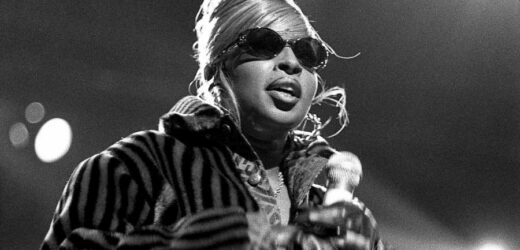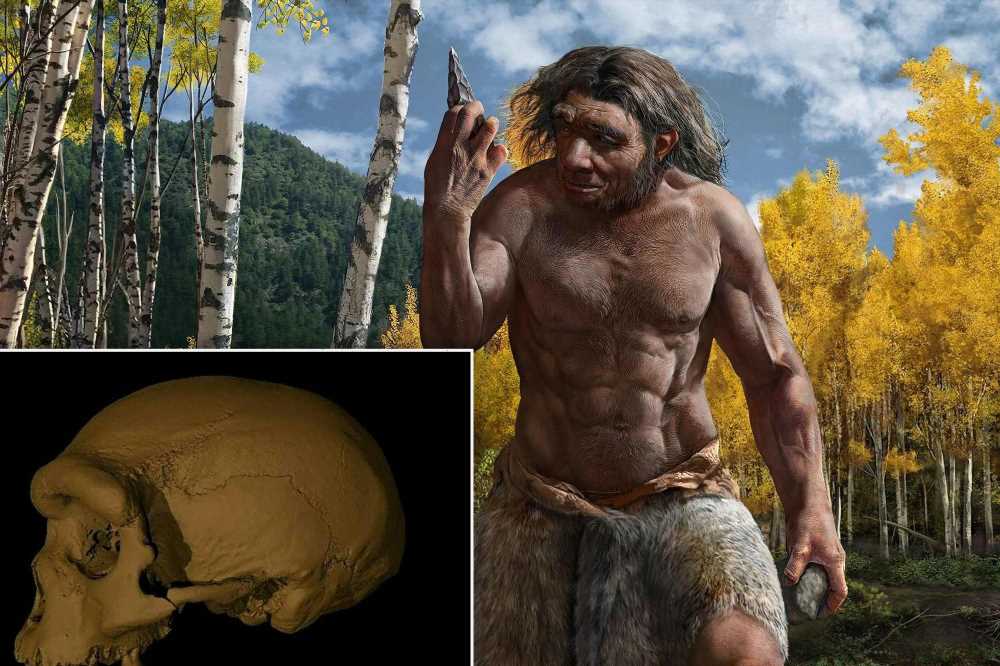Some artists struggle to determine which of their releases is the most vital — it’s like asking a parent to pick a favorite child. But Mary J. Blige has no such hang-ups. “I have 13 albums,” she declares early on in her new Amazon documentary, released on Friday, “but my second, My Life, is my most important.”
After working with a grab-bag of big names — including Devante Swing of Jodeci and the rappers Busta Rhymes and Grand Puba — on her debut, What’s the 411?, Blige narrowed her focus for its follow-up, working almost exclusively with P. Diddy and the rising producer Chucky Thompson. 1994 was a breakout year for Thompson, a multi-instrumentalist from D.C. who had played with the famous Go-Go pioneer Chuck Brown. Not only did the young beat-maker serve as a crucial behind-the-scenes presence during the making of My Life, blending rich Seventies soul with radio-ready hip-hop, Thompson also created “Big Poppa” and “Me & My Bitch” for a fresh-faced New York rapper by the name of the Notorious B.I.G.
Thompson appears in the My Life documentary — he’s also at work on a film of his own, Chucky Thompson Presents D.C. Go-go — and he spoke with Rolling Stone about his time in the studio with Blige and how his D.C. background influenced her second album.
Jaicee Calubaquib*
How did you first connect with Blige?
I was seeking management at that time, and it was between two people, Hiram Hicks or Puffy. Hiram could get me to TLC; Puffy could get me to Mary. At that time, I was doing a lot of merging of hip-hop with live instruments, because I played eight different instruments. So when I heard that What’s the 411? album, I’m like, “this is out of what I’m thinking.”
I already had a lot of the My Life album done before I met Puff. The songs I was sending him to give him an idea of me as a producer, he ended up using them for the album. I sent “Think of You” as a record for Mary, but Puff ended up using that for Usher.
One song in particular got everything started: “Be With You.” I wasn’t even supposed to send that song — it was actually for a group in DC. But the song got sent to Puff, and then Mary heard it. She was picking through like a thousand tapes and she hated everything. This one song comes up that she’s not supposed to have, and she loved it. I wasn’t initially scheduled to do shit else but that one song.
Once she’s actually in the studio recording this one song, I meet her. I know her energy at that time was everybody was coming at her — she’s this new young hip-hop phenomenon, and everyone wanted a piece of her. I just did the opposite, stood back, respected her space. She ended up walking up talking to me — “yo, this is one of my favorite records!”
Did you two have a vision for how you wanted the album to sound?
At that particular time in music, you look at what we were doing with [the Notorious] B.I.G., you look at what was happening with Snoop [Dogg], you look at what Jermaine Dupri was doing, it was a soul and Seventies funk thing happening.
I’m from D.C., where we have a thing called Quiet Storm on the radio. Me talking to her, our real connection came from that: She knew a lot of the records I knew growing up. She’s going through a situation; I’m bringing Curtis Mayfield to the table. That’s the tissue you need to dry your tears. I used to hear her tell stories of what was going on, but I wasn’t really involved in that. I used to look at her like a sister: Where are these guys, let’s go whoop their ass! She started drying her tears on these songs.
All this East Coast vs. West Coast stuff was bullshit. We were listening to [Snoop Dogg’s] Doggystyle when we made [the Notorious B.I.G.’s] Ready to Die. That time was full of soul kitchen type of shit. Mary wanted to do that Curtis Mayfield song [“Give Me Your Love”] — Snoop used a little bit of it in his album [on the Doggystyle track “Bathtub”]. And back then in New York, at the parties, they’d be playing a lot of the original soul records. Puff and Mary are the most New York-ity people you can ever be around.
https://youtube.com/watch?v=8ANWvYj5hzg%3Ffeature%3Doembed
Several people talk in the documentary about how they felt a lot of pressure to top the success of What’s the 411?
This was an important record for her. There’s the sophomore jinx that happens. The mission for me was to change a lot of the negative press that was happening with her because she was this new thing that people didn’t understand. People took jabs at that. I was trying to flip the bullshit image, whether it bothered her or not. I didn’t like people throwing stones at something they didn’t understand. So I was like, on this record, people are gonna know you’re a singer. You’re the real deal.
What type of stuff was the press saying at that time?
Just because she was wearing boots, she wasn’t dressed as a traditional female singer. Hip-hop style was different. People that don’t necessarily live that life or understand, the first thing they’re gonna do is say something bad about it. I took offense to that.
In the documentary, Blige talks a lot about how much she was struggling mentally she was in while recording the album. Was it challenging to be creative while facing depression?
You can feel the energy when she walks in the room: Something’s bothering her, there’s something she’s trying to deal with. I’m a Cancer — we’re emotional already. But even when she’s coming in with a lot of emotion, there’s always a soundtrack for that. For me, the soundtrack for that was coming from soul or gospel. There was a real strong gospel presence around Bad Boy Records — Faith Evans, Jodeci. Those melodies helped her sing what she was feeling about. She was crying in the studio. She would wipe away those tears and keep going.
https://youtube.com/watch?v=D0eF8P177fA%3Ffeature%3Doembed
As a producer, what did you like about mixing Seventies soul hits with contemporary hip-hop?
We’re grabbing and taking from history. You’re grabbing something that’s been classic for twenty years and then put it with a young perspective. I look at what we did with her as almost the same thing that Quincy Jones did with Michael Jackson. You got Quincy who’s seasoned, older, and Michael is younger. Those two energies together are the reason you can play a song like “Beat It,” a record that came out in the 1980s, to kids today, and they’ll jump around like that shit is brand new.
You remember those hearing tests we used to take back in high school? That first tone, everybody can hear that shit. It starts going up higher, and old dudes start dropping off. Hitting that first tone is why I feel like My Life still has stamina. I feel the same with B.I.G.’s albums. We were using older samples, but B.I.G. had a fresh perspective. So older people can hear it, younger people can hear it.
The title track to My Life sampled Roy Ayers’ “Everybody Loves the Sunshine.” In the documentary, Blige seems to have a special affection for that track.
I thought about doing the Roy Ayers record, but the way a Go-go band would do it. My whole background is D.C. and Go-go. Back then you either hired a band or a DJ. When they came with the crossfader for DJs, they could play one record and slide right into the next to keep people on the dancefloor longer. [The Go-go act] Chuck Brown said, “man, I’m losing business.” I played congas with Chuck. He decided, “I’ll put a percussion break in between songs.” So we would finish a song, then I’d do a percussion break, and I’d do a call and response — ask the crowd, “y’all tired yet?” That’s part of what started Go-go.
I didn’t want to do the Ayers record with the congas and all that, but with that musicianship, that pocket from Go-go. I made sure that shit had a feel to it. I played it in a house in Scarsdale, and Puff ran all the way from the other side of the house. Then Mary hears it and starts to write these lyrics where she’s having a conversation with herself. I’m listening like, “that’s a hell of a conversation.”
Were you pleased with the reception to My Life?
My Life got nominated for Best R&B Album, but it didn’t have any promotion behind it. We went up against [TLC’s] CrazySexyCool. The first single was fucking “Creep.” That shit is crazy. The second single was “Red Light Special;” that shit is sexy as shit. Then the last fucking single, which took them to eleven million in sales, was “Waterfalls,” the coolest shit you could think of. I thought that was a pop album though. But the way the whole Grammy thing works a lot of time is based on popularity. Not to say that CrazySexyCool wasn’t a great album. I just looked at it in a pop lane.
But I was determined that [Blige] would have the status she was deserving of. That became my mission. And you can line her up with any of the greatest singers.
Source: Read Full Article



